PT | EN
DEVIATIONS AND MISPLACEMENTS 4
Collective of Singular Art
During the summer of 2021, Cruzes Canhoto presents the fourth edition of “Desvios e Extravios” (Deviations and Misplacements), a collective exhibition of singular art.
On display are works by artists Sátrapa, Martinho, Idalécio, Clara Probanza and João Fróis, already regulars at the gallery, and a new artist, Miguel Pipa. With very different styles and techniques, they are all self-taught and have an extraordinary ability to surprise us with unusual visions of reality.
SÁTRAPA appears in late 2013, as an alter ego that arises from a combination of factors that lead him to create the Factoría de Androides, a space where his extraordinary creations are born spontaneously, in a therapeutic exercise of alienation, fiction and fantasy.
JOÃO FRÓIS, comes from Lourenço Marques (currently Maputo), where he was born in 1949. The psychedelic and surrealistic drawings, impregnated with African motifs, that make up his work are created on sheets of ordinary notebooks or pieces of cardboard that he finds on the street, using a simple pen.
IDALÉCIO is an outsider artist, born in 1952, in a small village in Aveiro district. Pop and populist, surreal and tropicalist, Idalécio is strongly inspired by the Portuguese folk art, of which he is a great collector.
MARTINHO was born in 1970, in Ribatejo, but it is in Ovar that he develops his work. Restless and misaligned by nature, he finds comfort for his mental unquietness through his artistic expression. He makes art like catharsis, creating in a compulsive and visceral way.
CLARA PROBANZA was born in 1959, in the Basque Country, and began to shape the material of her dreams, after the appearance of a serious illness that forced her to spend most of her time lying in bed or on a sofa. She then developed a fantastic and colorful universe of extraordinary beings in unusual drawings that express all the infinite possibilities that the world has to offer.
MIGUEL PIPA was born in 1980, in Caxinas, the peculiar fishermen’s neighborhood of Vila do Conde. With no academic background by choice, he has always shown a permanent restlessness with the outside world that surrounds him and a constant curiosity for what is behind things. From 2010 onwards, he began to create in drawing, using vulgar pens on different materials, a world of interconnected mutant microorganisms that he calls fictional botany.
Deviations and Misplacements 4
Date:
03 July > 10 December 2021
Where:
Galeria Cruzes Canhoto, Rua Miguel Bombarda, 452, Porto
Curatorship:
Cruzes Canhoto
Texts:
Tiago Coen / Cruzes Canhoto
Photography:
Nuno Marques / Joana X / Pedro Soares / Cruzes Canhoto
Design:
Pedro Soares / Cruzes Canhoto
All works exhibited are available for online purchase.
If you are interested please contact us.
SÁTRAPA
Sátrapa emerged at the end of 2013 as an alter ego of artistic expression in agitp(r)op mode. What started out as an exercise of alienation, fiction and fantasy, quickly evolved into something larger to an unusual level of creation in painting and sculpture.
For those unaware of Sátrapa’s creative process, it is difficult to believe that all his works are the result of actions driven by intuition, where nothing is outlined or preconceived. These are creations of the moment, on impulse, and only later refined and finished with a rigorous elaboration typical of a master.
In April 2018, Cruzes Canhoto exhibited a retrospective of the artist’s work at the exhibition “Factoría de Androides”, where one could appreciate not only his famous robotic sculptures but also the paintings that were at their base, still very close to simplistic forms of street art. The success was such, that it was necessary to organize a second part of that show, in the same year: “Factoría de Androides II: Marte Contra-Ataca”. In September 2019, still at Cruzes Canhoto, the exhibition “Mutantes” is presented, exclusively with paintings.
In his evolution, together with the aesthetic refinement, we perceive a greater concern with the denunciation of the brutal changes that society has been undergoing in recent years, especially in his new painting works, where the portrait forms with unconventional faces and bodies acquire a truly impressive depth of character and psychological density.
JOÃO FRÓIS
Born in 1949 in Lourenço Marques (now Maputo), João Fróis came from an Alentejo family based in Mozambique for three generations. In the former Portuguese colony, where he remained until 2001,
he did a little of everything, giving meaning to his nonaligned, dilettante and adventurous personality. Among other activities, he was a military man, a journalist, a basketball coach and a flight attendant for the Mozambique Airlines. During his free time,
he drew and painted, taking advantage of the close relationship he maintained in the local bohemian and artistic scene, which included Malangatana and Chichorro.
He currently lives in Ponte de Lima, completely out of the system, in a kind of isolation that allows him to take his days as he likes, free and detached from material questions. Self-taught, he makes art as a mental therapy, especially when life doesn’t suit him, never having shown great interest in projecting himself as an artist.
In April 2017, Cruzes Canhoto exhibited a retrospective of the artist, entitled “Psico-afroliberdelia”, composed of 60 drawings that resulted from an unconscious process of self-therapy over a decade (2003-2014).
Other works by João Fróis can be seen at:
Artist’s Page
Exhibition “Psico-afroliberdelia”
Exhibition “Deviations and Misplacements”
Exhibition “Deviations and Misplacements 2”
Exhibition “Deviations and Misplacements 3”
IDALÉCIO
Idalécio (b.1952) is a portuguese self-taught artist from a small village in Aveiro district.
He started creating spontaneously in the country house where he grew up as an orphan, having no artistic pretensions or interest in revealing the collection he has been accumulating throughout his entire life.
In April 2016, after multiple encounters and conversations, the exhibition “D’Idalécio… Todos Temos Um Pouco” opened at last at the gallery Cruzes Canhoto, in Porto, and his outsider sculptures and paintings could be shown in public for the first time. Still, despite having sold more than 300 art pieces during this operation, Idalécio intended to remain anonymous and continued in the factory where he has always worked, creating only in his spare time. It was not until September 2017, at his second exhibition in Cruzes Canhoto, “Metalúrgico Sexagenário”, that he agreed to reveal himself to the public and to the press.
Pop and populist, surreal and tropicalist, Idalécio is so strongly inspired by the Portuguese folk art as is by some of the expressions of African tribal art, of which he is also a collector. His presence in the interior of Mozambique in the late 1970s serving during the war could be at the basis of this artistic influence.
If at the beginning of his creative activity some stylistic inconsistencies are evident, in the more recent production is perceived a greater cohesion of styles, forms and themes, the result of a successful evolutionary process towards a unique and personal language, as
we could perceive in his most recent exhibition, “Saints, Devils and Other Beasts” (Cruzes Canhoto, 2020), where Idalécio, having nothing else to prove, refused to show any kind of exhibitionism, reducing shapes and colors to the essential, often monochromatic.
Other works by Idalécio can be seen at:
Artist’s Page
Exhibition “D’Idalécio, Todos Temos Um Pouco”
Exhibition “Idalécio: Metalúrgico Sexagenário”
Exhibition “Saints, Devils and other Beasts”
Exhibition “Vade Retro”
Exhibition “Deviations and Misplacements”
Exhibition “Deviations and Misplacements 2”
Exhibition “Deviations and Misplacements 3”
MARTINHO
Born in the Ribatejo region, but living in Ovar for a long time, Martinho (b. 1970, João Pedro Coutinho) chose to graduate in design.
Restless and misaligned by nature, he soon found comfort for his mental unquietness through his artistic expression. However, he does not create for the artistic milieu or in search of fame. Nor does he take himself too seriously in his occupation. He makes art like catharsis, creating in a compulsive and visceral way. This is noticeable in his entire work, although not in an obvious way, both in paintings and in sculptural objects.
His collages and assemblages, apparently chaotic and abstract, actually present narratives that report situations of his tormented daily life. It turns out that this daily life is not exclusive to Martinho. It’s common to many of us, and that’s what makes his work so strangely attractive, impressive and empathetic.
After a first solo exhibition, in 2018, at the Ovar Art Center, he presented “Sem Juízos”, at the gallery Cruzes Canhoto, in Porto, in March 2020.
Other works by Martinho can be seen at:
Artist’s Page
Exhibition “Sem Juízos”
Exhibition “Deviations and Misplacements”
Exhibition “Deviations and Misplacements 2”
Exhibition “Deviations and Misplacements 3”
CLARA PROBANZA
Born in 1959, in the Basque Country, Clara Probanza Arrizabalaga began to shape the material of her dreams, after the emergence of a serious illness that transformed her life and forced her to spend most of her time lying in bed or on a couch.
In order to ease the pain she felt, in 2008, in the company of her sister, a well-known illustrator, she started to build a small world of extraordinary three-dimensional beings made of cotton fabric, forging what they both called “couch art”. Subsequently, the fantastic and colorful universe that populated her mind passed to paper, through drawings where she expressed the infinite possibilities that the world has to offer.
Discovered by Cruzes Canhoto in 2017, she becomes part of all the collective shows held by the gallery from then on. In December 2020, she presents her first solo exhibition at Cruzes Canhoto, entitled “Azal Berritzea” (skin renewal, in Basque).
The characters with multiple heads but one arm, the animals with a thousand eyes and the women with bird’s paws, initially drawn with some naïvité, remain in these new drawings, only that they now appear in more detail and with a more precise line, integrated in a complex web of new patterns and diverse figurations. They’re abysmal but charming beings that give us lessons for the times that are going on, from a couch in the Basque Country.
Other works by Clara Probanza can be seen at:
Artist’s Page
Exhibition “Azal Berritzea”
Exhibition “Deviations and Misplacements”
Exhibition “Deviations and Misplacements 2”
MIGUEL PIPA
Miguel Pipa was born in 1980, in Caxinas, the peculiar fishermen’s neighborhood of Vila do Conde.
With no academic background by choice, he has always shown a permanent restlessness with the outside world that surrounds him and a constant curiosity for what is behind things. From 2010 onwards, he began to create in drawing, using vulgar pens on different materials, a world of interconnected mutant microorganisms that he calls fictional botany.






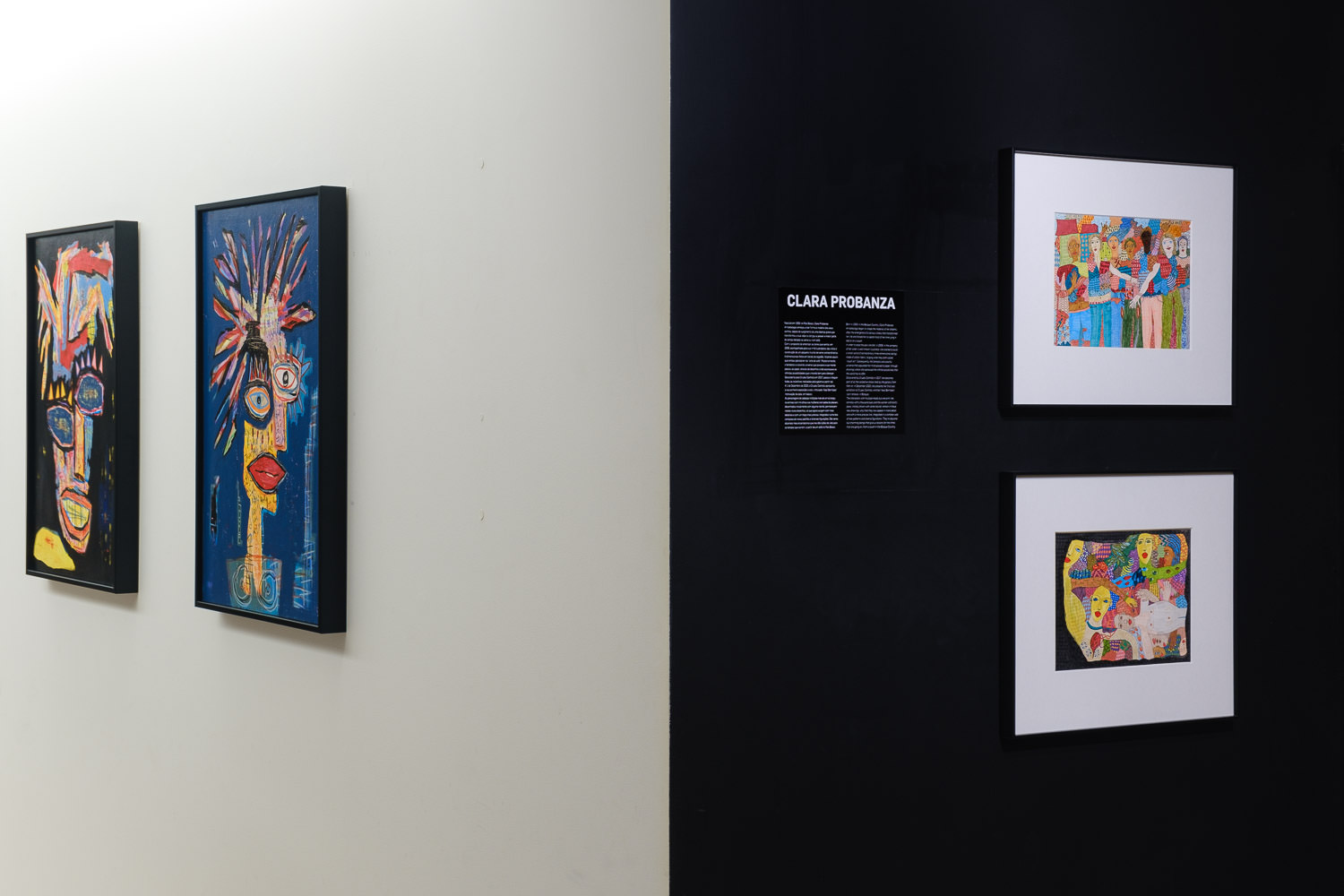

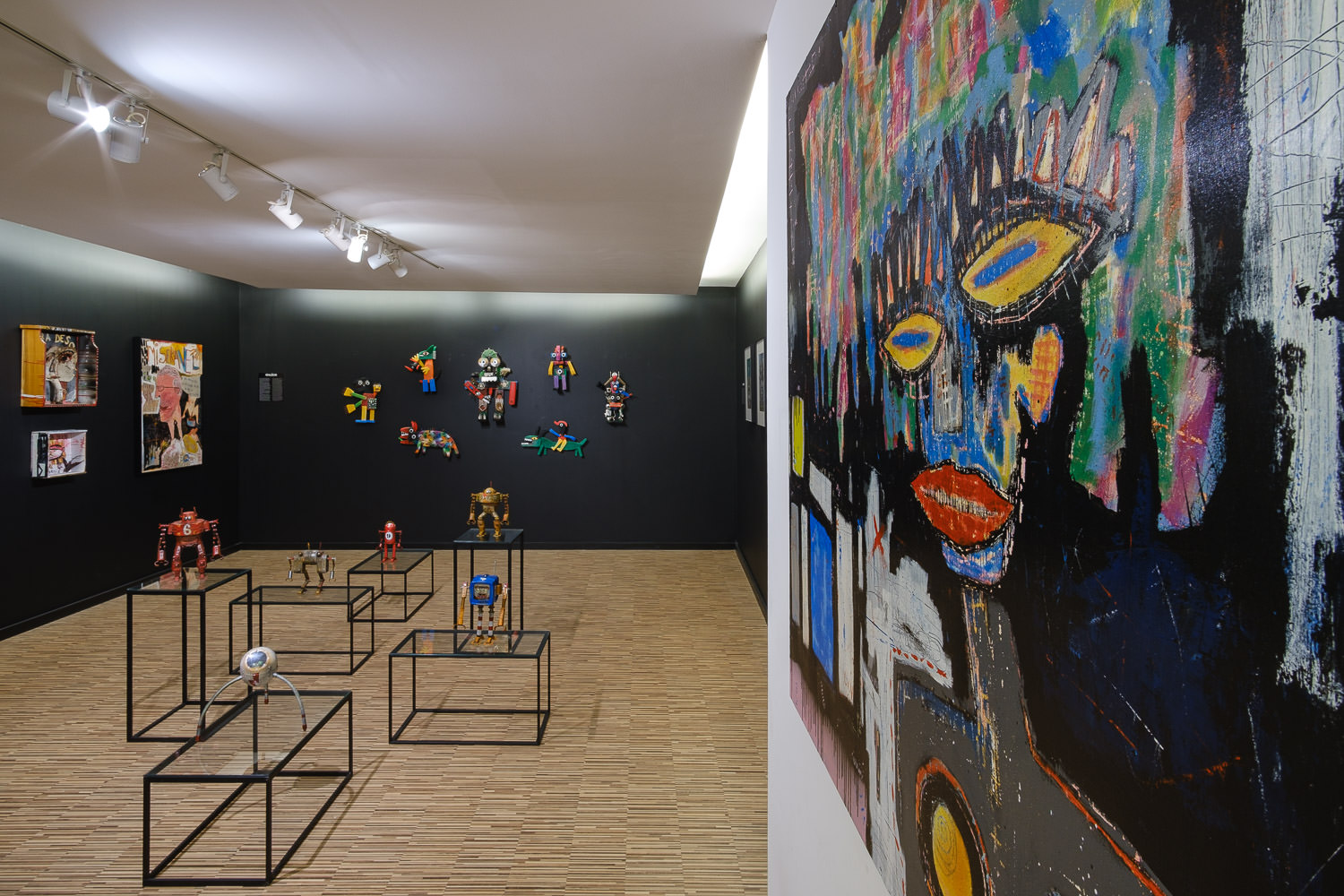

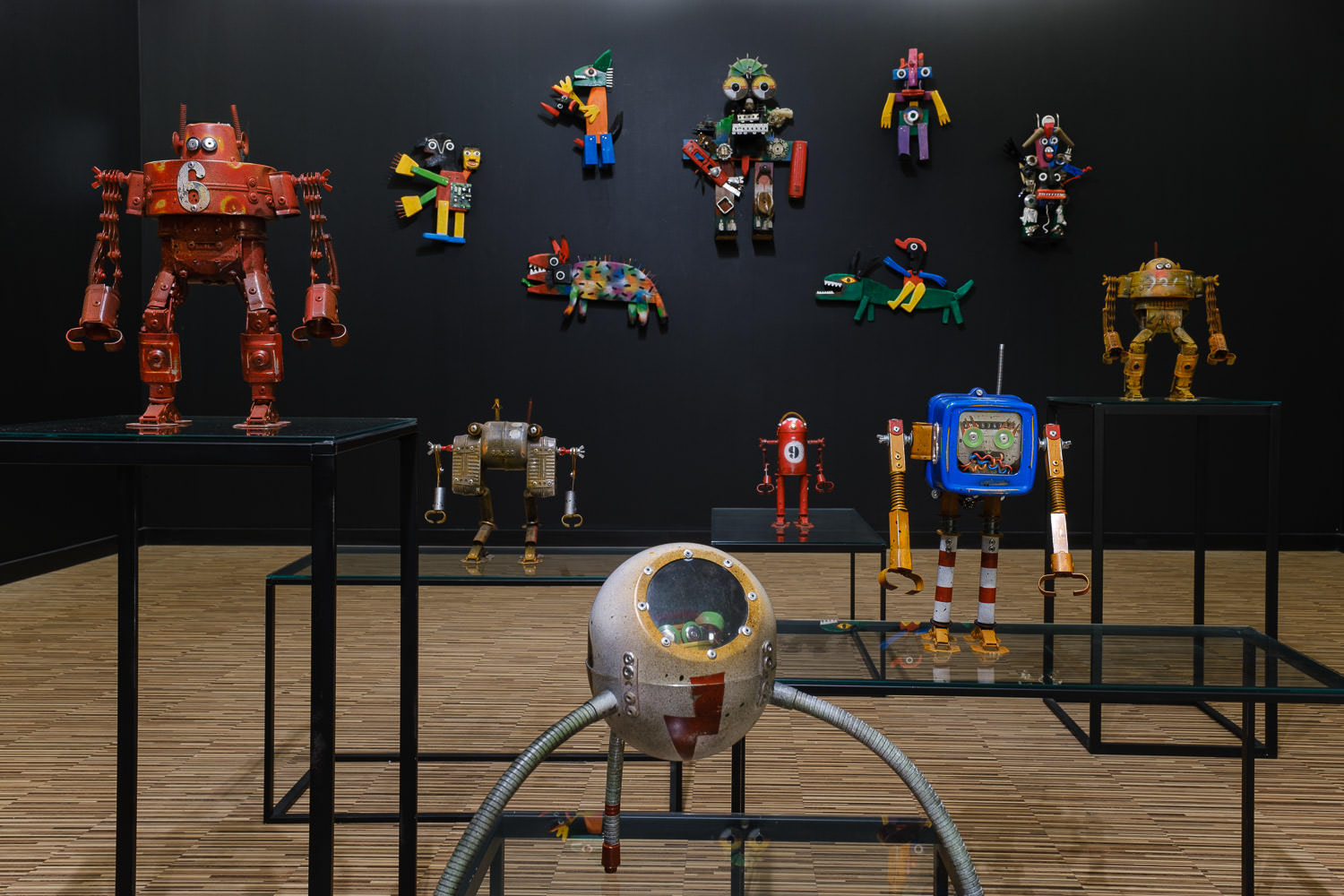
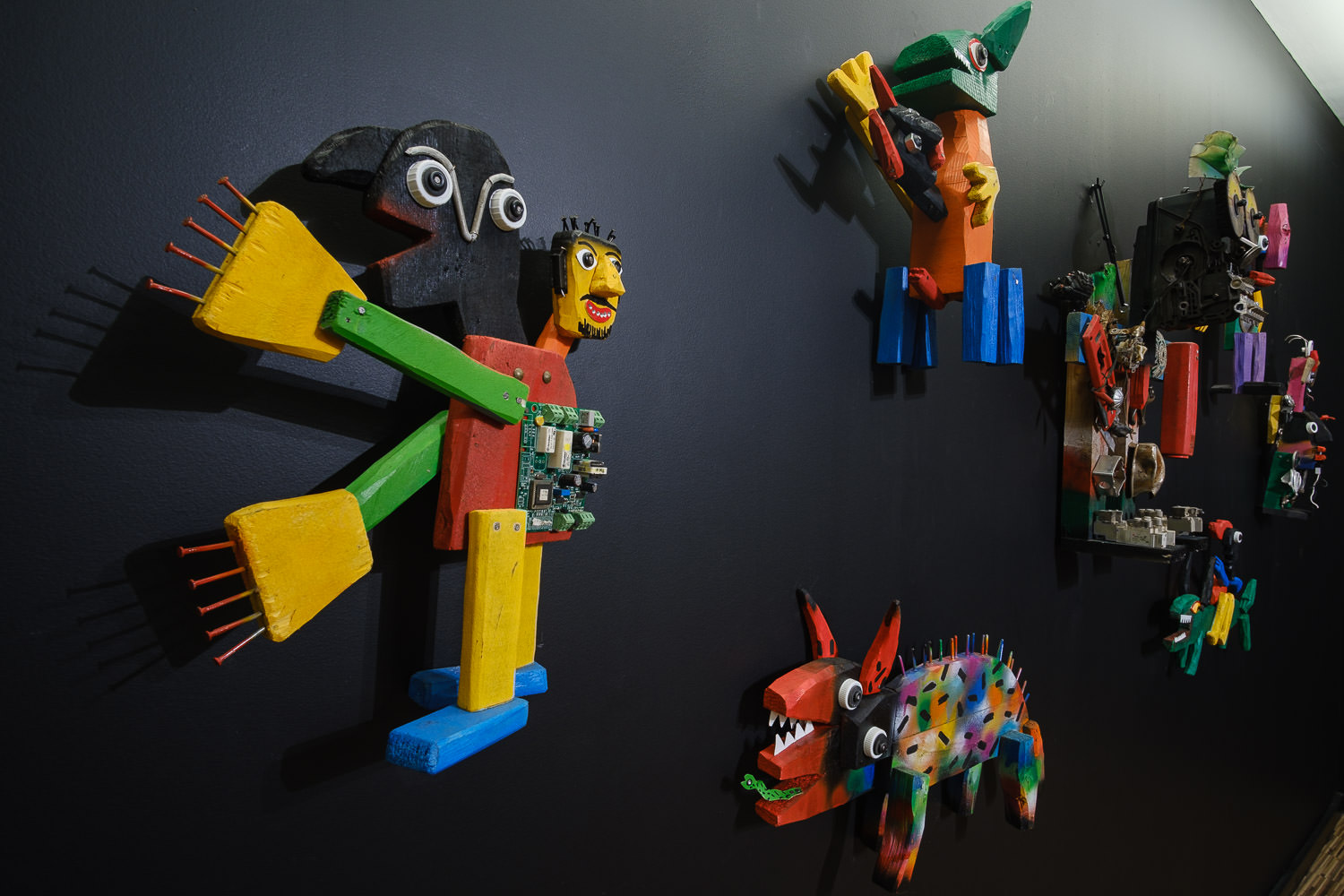
![Nº117, 2020, Acrílico sobre madeira, 122x122cm – Ref CCSA20-010 [INDISPONÍVEL / UNAVAILABLE]](https://cruzescanhoto.com/wp-content/uploads/2020/12/10_WEB-200x200.jpg)
!["Nº108", 2021, acrílico sobre madeira, 120x120cm – Ref CCSA21-015 [INDISPONÍVEL / UNAVAILABLE]](https://cruzescanhoto.com/wp-content/uploads/2021/07/108-120x120-200x200.jpg)
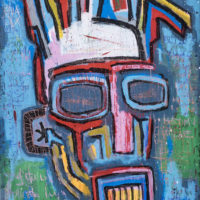
!["Nº133", 2021, acrílico sobre madeira, 80x120cm – Ref CCSA21-016 [INDISPONÍVEL/UNAVAILABLE]](https://cruzescanhoto.com/wp-content/uploads/2021/07/133-80x120-1-200x200.jpg)
![Nº131, 2021, Acrílico sobre madeira, 120x120cm – Ref CCSA21-009 [INDISPONÍVEL / UNAVAILABLE]](https://cruzescanhoto.com/wp-content/uploads/2021/07/131-101x103-200x200.jpg)
![Nº124, 2021, Técnica mista sobre cartão, 60x82cm – Ref CCSA21-002 [INDISPONÍVEL/UNAVAILABLE]](https://cruzescanhoto.com/wp-content/uploads/2021/07/124-60x82-200x200.jpg)
![Nº112, 2020, Acrílico sobre cartão, 60x82cm – Ref CCSA20-006 [COLECÇÃO CRUZES CANHOTO]](https://cruzescanhoto.com/wp-content/uploads/2020/12/1_WEB-200x200.jpg)
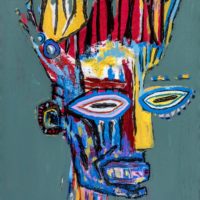
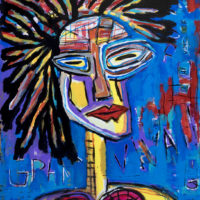
![Nº130, 2021, Técnica mista sobre cartão, 60x82cm – Ref CCSA21-008 [INDISPONÍVEL/UNAVAILABLE]](https://cruzescanhoto.com/wp-content/uploads/2021/07/130-60x82-200x200.jpg)
![Nº127, 2021, Técnica mista sobre cartão, 60x82cm – Ref CCSA21-005 [INDISPONÍVEL/UNAVAILABLE]](https://cruzescanhoto.com/wp-content/uploads/2021/07/127-60x82-200x200.jpg)
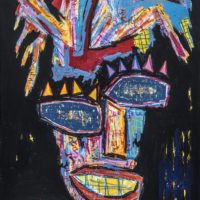
![Nº129, 2021, Acrílico sobre cartão, 60x82cm – Ref CCSA21-007 [INDISPONÍVEL/UNAVAILABLE]](https://cruzescanhoto.com/wp-content/uploads/2021/07/129-60x82-200x200.jpg)
![Nº128, 2021, Técnica mista sobre cartão, 60x82cm – Ref CCSA21-006 [INDISPONÍVEL / UNAVAILABLE]](https://cruzescanhoto.com/wp-content/uploads/2021/07/128-60x82-200x200.jpg)
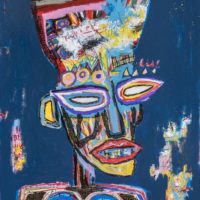
![Nº136, 2021, Técnica mista sobre cartão, 60x82cm – Ref CCSA21-013 [INDISPONÍVEL / UNAVAILABLE]](https://cruzescanhoto.com/wp-content/uploads/2021/07/136-60x82-200x200.jpg)
![Nº122, 2020, Acrílico sobre cartão, 60x82cm – Ref CCSA20-014 [INDISPONÍVEL/UNAVAILABLE]](https://cruzescanhoto.com/wp-content/uploads/2020/12/7_WEB-200x200.jpg)
![Nº114, 2020, Acrílico sobre cartão, 60x82cm – Ref CCSA20-008 [COLECÇÃO CRUZES CANHOTO]](https://cruzescanhoto.com/wp-content/uploads/2020/12/3_WEB-200x200.jpg)
![Nº118, 2020, Acrílico sobre cartolina, 50x60cm – Ref CCSA20-011 [INDISPONÍVEL/UNAVAILABLE]](https://cruzescanhoto.com/wp-content/uploads/2020/12/9_WEB-200x200.jpg)
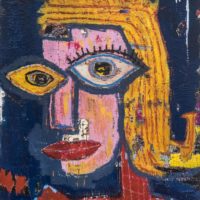
![Nº134, 2021, Acrílico sobre madeira, 120x120cm – Ref CCSA21-011 [INDISPONÍVEL / UNAVAILABLE]](https://cruzescanhoto.com/wp-content/uploads/2021/07/134-120x120-200x200.jpg)
![Nº132, 2021, Técnica mista sobre cartão, 80x120cm – Ref CCSA21-010 [INDISPONÍVEL/UNAVAILABLE]](https://cruzescanhoto.com/wp-content/uploads/2021/07/132-80x120-200x200.jpg)


!["Nº542 – LGBT 600 - Blancanieves”, 2021-06-14, objectos metálicos vários pintados, 22x28x10cm - Ref CCFA21-012 [INDISPONÍVEL/UNAVAILABLE]](https://cruzescanhoto.com/wp-content/uploads/2021/07/N542-01-200x200.jpg)
!["Nº543 – Yarislav”, 2021-07-22, objectos metálicos vários pintados, 23x29x10cm - Ref CCFA21-013 [INDISPONÍVEL/UNAVAILABLE]](https://cruzescanhoto.com/wp-content/uploads/2021/07/N543-01-200x200.jpg)
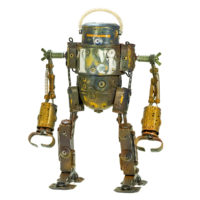
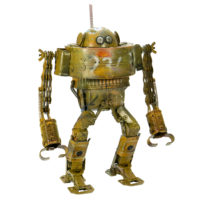
!["Nº433 - Victorinuska", 2018-09-25, objectos metálicos vários pintados - Ref CCFA21-005 [INDISPONÍVEL/UNAVAILABLE]](https://cruzescanhoto.com/wp-content/uploads/2021/07/433-Victorinuska-200x200.jpg)
!["Nº498 - Davidson", 2019-11-08, objectos metálicos vários pintados, 27x33x14cm – Ref CCFA21-009 [INDISPONÍVEL/UNAVAILABLE]](https://cruzescanhoto.com/wp-content/uploads/2021/07/498-Davidson-200x200.jpg)
!["Nº477 - Hudson", 2019-02-15, objectos metálicos vários pintados, 20x32x10cm - Ref CCFA21-007 [INDISPONÍVEL/UNAVAILABLE]](https://cruzescanhoto.com/wp-content/uploads/2021/07/477-Hudson-200x200.jpg)
!["Nº462 - Satralatas 1.0", 2018-12-17, objectos metálicos vários pintados, 19x28x11cm – Ref CCFA21-006 [INDISPONÍVEL/UNAVAILABLE]](https://cruzescanhoto.com/wp-content/uploads/2021/07/462-Classic_Lata-200x200.jpg)
!["Nº531 - Confineitor", 2020-01-25, objectos metálicos vários pintados, 24x35x25cm - Ref CCFA21-010 [INDISPONÍVEL/UNAVAILABLE]](https://cruzescanhoto.com/wp-content/uploads/2021/07/531-Confinator-200x200.jpg)
!["Nº96 - Venus", 2016-05-31, objectos metálicos vários pintados, 20x31x11cm – Ref CCFA21-002 [INDISPONÍVEL/UNAVAILABLE]](https://cruzescanhoto.com/wp-content/uploads/2021/07/091-Venus-200x200.jpg)

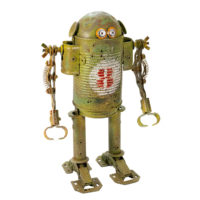





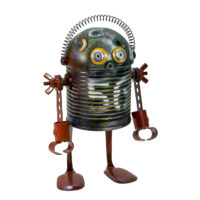
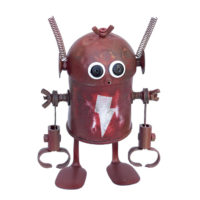


!["Sem título", 2020, artpen e tinta de vitral sobre papel, 30x42cm – CCJF20-032 [INDISPONÍVEL / UNAVAILABLE]](https://cruzescanhoto.com/wp-content/uploads/2020/12/FROIS_032-200x200.jpg)
!["Sem título", 2020, artpen e tinta de vitral sobre papel, 30x42cm – CCJF20-034 [INDISPONÍVEL / UNAVAILABLE]](https://cruzescanhoto.com/wp-content/uploads/2020/12/FROIS_034-200x200.jpg)
!["Sem título", 2020, artpen e tinta de vitral sobre papel, 30x42cm – CCJF20-035 [INDISPONÍVEL / UNAVAILABLE]](https://cruzescanhoto.com/wp-content/uploads/2020/12/FROIS_035-200x200.jpg)
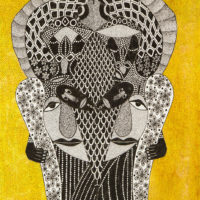
![Sem título, 2021, artpen e tinta de vitral sobre papel, 30x42cm – Ref CCJF21-002 [INDISPONÍVEL / UNAVAILABLE]](https://cruzescanhoto.com/wp-content/uploads/2021/03/frois1_WEB-200x200.jpg)
![Sem título, 2021, artpen e tinta de vitral sobre papel, 30x42cm – Ref CCJF21-007 [INDISPONÍVEL / UNAVAILABLE]](https://cruzescanhoto.com/wp-content/uploads/2021/03/frois4_WEB-200x200.jpg)
![Sem título, 2021, artpen e tinta de vitral sobre papel, 30x42cm – CCJF21-001 [COLECÇÃO CRUZES CANHOTO]](https://cruzescanhoto.com/wp-content/uploads/2021/03/frois10_WEB-200x200.jpg)
![Sem título, 2021, artpen e tinta de vitral sobre papel, 30x42cm – Ref CCJF21-005 [INDISPONÍVEL / UNAVAILABLE]](https://cruzescanhoto.com/wp-content/uploads/2021/03/frois7_WEB-200x200.jpg)
![Sem título, 2021, artpen e tinta de vitral sobre papel, 30x42cm – Ref CCJF21-003 [INDISPONÍVEL / UNAVAILABLE]](https://cruzescanhoto.com/wp-content/uploads/2021/03/frois3_WEB-200x200.jpg)
![Sem título, 2021, artpen e tinta de vitral sobre papel, 30x42cm – Ref CCJF21-006 [INDISPONÍVEL / UNAVAILABLE]](https://cruzescanhoto.com/wp-content/uploads/2021/03/frois5_WEB-200x200.jpg)
![Sem título, 2021, artpen e tinta de vitral sobre papel, 30x42cm – CCJF21-004 [INDISPONÍVEL/UNAVAILABLE]](https://cruzescanhoto.com/wp-content/uploads/2021/03/frois6_WEB-200x200.jpg)
![Sem título, 2021, artpen e tinta de vitral sobre papel, 30x42cm – Ref CCJF21-008 [INDISPONÍVEL / UNAVAILABLE]](https://cruzescanhoto.com/wp-content/uploads/2021/03/frois2_WEB-200x200.jpg)
![Sem título, 2020, artpen e tinta de vitral sobre papel, 30x42cm – Ref CCJF20-030 [INDISPONÍVEL / UNAVAILABLE]](https://cruzescanhoto.com/wp-content/uploads/2020/12/FROIS_030-200x200.jpg)
![Sem título, 2020, artpen e tinta de vitral sobre papel, 30x42cm – Ref CCJF20-031 [INDISPONÍVEL / UNAVAILABLE]](https://cruzescanhoto.com/wp-content/uploads/2020/12/FROIS_031-200x200.jpg)
![Sem título, 2020, artpen e tinta de vitral sobre papel, 30x42cm – Ref CCJF20-029 [INDISPONÍVEL / UNAVAILABLE]](https://cruzescanhoto.com/wp-content/uploads/2020/12/FROIS_029-200x200.jpg)
![Sem título, 2019, acrílico sobre tela, 100x81cm – Ref CCID21P001 [INDISPONÍVEL / UNAVAILABLE]](https://cruzescanhoto.com/wp-content/uploads/2021/09/IDALECIO_1_WEB-200x200.jpg)
![Sem título, 2019, acrílico sobre tela, 100x81cm – Ref CCID21P002 [INDISPONÍVEL / UNAVAILABLE]](https://cruzescanhoto.com/wp-content/uploads/2021/09/IDALECIO_3_WEB-200x200.jpg)
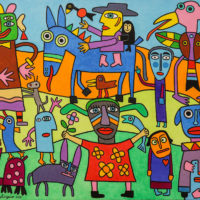
![Sem título, 2019, acrílico sobre tela, 100x81cm – Ref CCID21P004 [INDISPONÍVEL / UNAVAILABLE]](https://cruzescanhoto.com/wp-content/uploads/2021/09/IDALECIO_2_WEB-200x200.jpg)
![Sem título, 2020, acrílico sobre tela, 100x81cm – Ref CCID21P006 [INDISPONÍVEL / UNAVAILABLE]](https://cruzescanhoto.com/wp-content/uploads/2021/09/IDALECIO_5_WEB-200x200.jpg)
![Santo Pasmado, 2018, madeira pintada, outros, 31x29x21cm – Ref CCID21E017 [INDISPONÍVEL / UNAVAILABLE]](https://cruzescanhoto.com/wp-content/uploads/2021/09/7-1-200x200.jpg)
![Gato Sentado, 2019, madeira pintada, outros, 22x33x13cm – Ref CCID21E014 [INDISPONÍVEL / UNAVAILABLE]](https://cruzescanhoto.com/wp-content/uploads/2021/09/11-2-200x200.jpg)
![Diabo Pasmado, 2018, madeira pintada, outros, 30x32x16cm – Ref CCID21E015 [INDISPONÍVEL / UNAVAILABLE]](https://cruzescanhoto.com/wp-content/uploads/2021/09/8-1-200x200.jpg)
![Ouriço Preto, 2021, madeira pintada, outros, 21x14x15cm – Ref CCID21E018 [INDISPONÍVEL / UNAVAILABLE]](https://cruzescanhoto.com/wp-content/uploads/2021/09/9-1-200x200.jpg)
![Pasmado Zangado, 2019, madeira pintada, outros, 28x29x15cm – Ref CCID21E016 [INDISPONÍVEL / UNAVAILABLE]](https://cruzescanhoto.com/wp-content/uploads/2021/09/10-1-200x200.jpg)
!["Robot de Duas Cabeças", 2019, Madeira pintada, outros, 38x45x12cm – CCID21E003 [INDISPONÍVEL / UNAVAILABLE]](https://cruzescanhoto.com/wp-content/uploads/2021/01/1-200x200.jpg)
!["Pernas Tortas", 2018, Madeira pintada, outros, 22x44x17cm – CCID21E004 [INDISPONÍVEL / UNAVAILABLE]](https://cruzescanhoto.com/wp-content/uploads/2021/01/5-200x200.jpg)
![Casal a Dançar, 2020, acrílico sobre madeira, outros, 20x38x7cm – CCID20-069 [INDISPONÍVEL / UNAVAILABLE]](https://cruzescanhoto.com/wp-content/uploads/2020/07/17-200x200.jpg)
![O Torneira, 2018, madeira pintada, outros, 19x49x12cm – Ref CCID21E010 [INDISPONÍVEL / UNAVAILABLE]](https://cruzescanhoto.com/wp-content/uploads/2021/09/6-1-200x200.jpg)
![O Portuga, 2020, madeira pintada, outros, 34x50x11cm – Ref CCID21E011 [INDISPONÍVEL / UNAVAILABLE]](https://cruzescanhoto.com/wp-content/uploads/2021/09/1-1-200x200.jpg)
![O Angiú Monstro, 2018, Acrílico sobre madeira e objectos, 35x52x15cm – CCID20-103 [INDISPONÍVEL / UNAVAILABLE]](https://cruzescanhoto.com/wp-content/uploads/2020/12/24-200x200.jpg)
![Santo António Fininho, 2018, madeira pintada, outros, 17x56x18cm – Ref CCID21E009 [INDISPONÍVEL / UNAVAILABLE]](https://cruzescanhoto.com/wp-content/uploads/2021/09/4-1-200x200.jpg)
![Cristo Metalúrgico, 2017, madeira, objectos metálicos vários pintados, 62x114x23cm – Ref CCID21E008 [INDISPONÍVEL / UNAVAILABLE]](https://cruzescanhoto.com/wp-content/uploads/2021/09/cristo_web-200x200.jpg)
![Santo António do Ferro Velho, 2019, madeira, objectos metálicos vários pintados, 28x41x8cm – Ref CCID19-024 [INDISPONÍVEL / UNAVAILABLE]](https://cruzescanhoto.com/wp-content/uploads/2021/09/2-1-200x200.jpg)
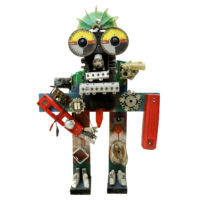
!["Ortros – O Cão de Duas Cabeças", 2019, Madeira pintada, outros, 60x34x12cm – CCID21-002 [INDISPONÍVEL/UNAVAILABLE]](https://cruzescanhoto.com/wp-content/uploads/2021/01/8-200x200.jpg)
!["Cão-guru endiabrado", 2020, Madeira pintada, outros, 33x45x17cm – CCID21-005 [INDISPONÍVEL / UNAVAILABLE]](https://cruzescanhoto.com/wp-content/uploads/2021/01/2-200x200.jpg)
![Lobo Mau, 2020, Acrílico sobre madeira e objectos, 45x28x16cm – CCID20-106 [INDISPONÍVEL / UNAVAILABLE]](https://cruzescanhoto.com/wp-content/uploads/2021/01/6-200x200.jpg)

![O Rapaz do Dinoçáuro, 2018, Acrílico sobre madeira e objectos, 63x36x6cm – CCID20-105 [INDISPONÍVEL / UNAVAILABLE]](https://cruzescanhoto.com/wp-content/uploads/2020/12/26-200x200.jpg)
![Sem título, 2014, técnica mista sobre tela, 60x90cm – Ref CCMT20-006 [INDISPONÍVEL / UNAVAILABLE]](https://cruzescanhoto.com/wp-content/uploads/2020/03/martinho14-200x200.jpg)
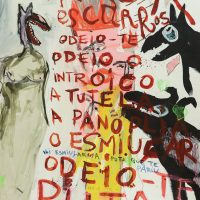
![Sem título, 2020, Acrílico sobre tela, 75x90cm – Ref CCMT21-001 [INDISPONÍVEL / UNAVAILABLE]](https://cruzescanhoto.com/wp-content/uploads/2022/08/MARTINHO_2_WEB-200x200.jpg)
!["Sem título", 2019, técnica mista sobre cartão, 75x105cm [INDISPONÍVEL / UNAVAILABLE]](https://cruzescanhoto.com/wp-content/uploads/2020/03/martinho11-1-200x200.jpg)
![Sem título, 2019, técnica mista sobre cartão, 75x105cm – Ref CCMT20-008 [INDISPONÍVEL / UNAVAILABLE]](https://cruzescanhoto.com/wp-content/uploads/2020/03/martinho9-1-200x200.jpg)
![Sem título, 2020, acrílico sobre assemblage de objectos vários em gaveta de madeira, 45x52x15cm – Ref CCMT20-031 [INDISPONÍVEL / UNAVAILABLE]](https://cruzescanhoto.com/wp-content/uploads/2020/09/1-200x200.jpg)

![Sem título, 2018, acrílico sobre assemblage de objectos vários e instalação eléctrica sobre caixa, 30x32x11cm – Ref CCMT20-030 [COLECÇÃO CRUZES CANHOTO]](https://cruzescanhoto.com/wp-content/uploads/2020/08/1-3-200x200.jpg)
![Sem título, 2019, acrílico sobre assemblage de objectos vários em caixa, 44x83x9cm - CCMT20-025 [INDISPONÍVEL / UNAVAILABLE]](https://cruzescanhoto.com/wp-content/uploads/2020/03/6-200x200.jpg)
![Sem título, 2019, acrílico sobre assemblage de objectos vários em caixa, 32x30x11cm - CCMT20-029 [INDISPONÍVEL / UNAVAILABLE]](https://cruzescanhoto.com/wp-content/uploads/2020/03/1-200x200.jpg)
![Sem título, 2018, acrílico sobre assemblage de objectos vários em gaveta de madeira, 32x48x13cm – Ref CCMT20-032 [INDISPONÍVEL / UNAVAILABLE]](https://cruzescanhoto.com/wp-content/uploads/2020/09/2-1-200x200.jpg)
![Sem título, 2019, acrílico sobre assemblage de objectos vários em caixa, 36x52x9cm – Ref CCMT20-028 [INDISPONÍVEL / UNAVAILABLE]](https://cruzescanhoto.com/wp-content/uploads/2020/03/5-200x200.jpg)
![Sem título, 2018, Caneta e tinta sobre papel, 24x32cm – CCCP20-018 [INDISPONÍVEL / UNAVAILABLE]](https://cruzescanhoto.com/wp-content/uploads/2020/11/13_WEB-200x200.jpg)
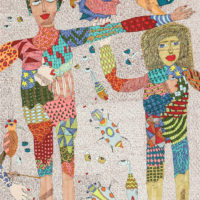
![Sem título, 2020, Caneta e tinta sobre papel, 24x32cm – CCCP20-028 [INDISPONÍVEL / UNAVAILABLE]](https://cruzescanhoto.com/wp-content/uploads/2020/11/19_WEB-200x200.jpg)
![Sem título, 2019, Caneta e tinta sobre papel, 24x32cm – CCCP20-026 [INDISPONÍVEL / UNAVAILABLE]](https://cruzescanhoto.com/wp-content/uploads/2020/11/23_WEB-200x200.jpg)

![Sem título, 2020, caneta sobre tela, 60x110cm – Ref CCMP21-006 [INDISPONÍVEL / UNAVAILABLE]](https://cruzescanhoto.com/wp-content/uploads/2021/07/6_WEB-200x200.jpg)
![Sem título, 2020, caneta sobre tela, 80x80cm – Ref CCMP21-007 [COLECÇÃO CRUZES CANHOTO]](https://cruzescanhoto.com/wp-content/uploads/2021/07/2_WEB-200x200.jpg)
![Sem título, 2020, caneta sobre tela, 60x80cm – Ref CCMP21-009 [INDISPONÍVEL / UNAVAILABLE]](https://cruzescanhoto.com/wp-content/uploads/2021/07/5_WEB-200x200.jpg)

![Sem título, 2020, caneta sobre madeira, 79x100x5cm – Ref CCMP21-004 [INDISPONÍVEL / UNAVAILABLE]](https://cruzescanhoto.com/wp-content/uploads/2021/07/3_WEB-200x200.jpg)